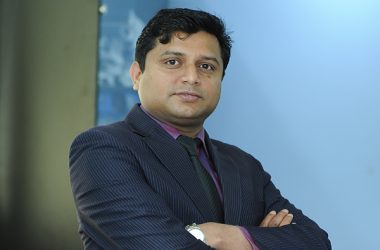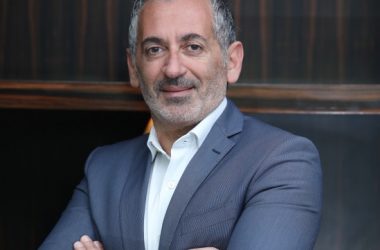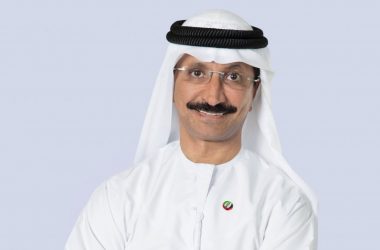Determined to empower physicians and nurses with real-time information, as well as enhancing the patient experience, Medcare’s general manager for IT Naushad Mohammed opted for a fresh converged network solution.
Naushad Mohammed, Medcare
In a hospital environment, transmitting information to medical staff through necessary veins of communication, at speed, is imperative. Naushad Mohammed, general manager, IT, Medcare Hospitals and Medical Centres, knows from experience just how much physicians can benefit from technology that delivers this power.
A part of the Aster DM Healthcare group, Medcare has three operational hospitals and 12 medical centres in its portfolio. A top-of-the-line women and children’s hospital also opened last July.
“In terms of technology and patient services, we want to be a high-end hospital,” Mohammed says. “Most hospitals in this country don’t have specialist services, so in that respect we have an advantage.” Medcare also operates with a range of different insurance partners, allowing it to also target “Higher income” workers.
Joining Medcare 10 months ago, Mohammed immediately made converging Medcare’s network a top priority. “It made no sense to have information scattered across sites,” he says. “As with most organisations, there’s a degree of legacy technology in our infrastructure.” Mohammed’s approach was never purely centred around IT, however. He realised that the only way technology could provide value to the organisation was by improving the quality of patient care and services.
“High quality patient care is available at Medcare,” he says. “However, if patients experience issues such as unnecessary waiting times, their guest experience suffers. Hospitality is important.” What’s more, a range of mission-critical services within any hospital require powerful IT infrastructure. “Radiology, for instance, demands a strong network and processing power,” Mohammed says.
Mohammed also recognised that Medcare would have to make efficient use of the data it had at its disposal. “Physicians can do their best to help, but the tools they have to examine data are becoming increasingly important,” he says. “Things are changing. Collating and distributing data is difficult; structured data is more straightforward, but faster analysis of unstructured data is the goal.”
With Medcare’s physicians regularly moving across company sites, Mohammed realised it was imperative for a solution to ensure data could be easily transmitted across the network. “They regularly have to login to multiple systems and networks,” he says. “This presents a challenge from a healthcare point of view. There is a vast amount of raw data, but it has to be presented in such a way that guarantees quality patient care and user experience.”
Physicians had previously been inhibited by a sub-standard network. “They would often move between floors and lose connectivity,” Mohammed says. “We have fantastic physicians and nurses, but we need to empower them in such a way that they can do their jobs in whichever way that they are most comfortable. It’s crucial that we do everything we can to set ourselves apart in that respect.”
Recognising the need for enhanced communications tools, Mohammed decided that Medcare was in need of a converged solution that could encompass data, voice and wireless communication. Mohammed began the process of vendor selection, and, in February 2016, evaluated three companies’ products. He eventually decided to partner with Alcatel-Lucent Enterprise for the change, which would encompass three of Medcare’s sites.
Medcare deployed a mix of the firm’s networking and unified communications products, including the OmniSwitch data centre and campus access switches, OmniAccess wireless LAN controllers and access points, and the OmniPCX enterprise communication server and Premium DeskPhones. “We began to lay the foundation to grow and use different sites,” Mohammed says.
Although “connectivity and communication” were the main challenges that Mohammed anticipated prior to the implementation, the process itself was relatively painless. “This was a greenfield solution, so there was not much of a teething problem,” Mohammed says. “We only had about two hours of downtime, so that gives you an idea of the ease with which this was completed.” The relatively smooth implementation meant that work was completed by June 2016.
As well as adding IP telephony, the new networking solution now gives priority network bandwidth to critical areas of hospitals and medical centres like the operating room, ensuring information is readily available so doctors can make potentially life-saving decisions.
The changes have already smoothed over a range of Medcare’s processes, including a 50 percent reduction in support calls due to the enhanced telephony system. “Our Wi-Fi connectivity has been significantly enhanced,” Mohammed says. “Coverage across the hospital is now much improved.”
Crucially, the changes have also made the exchange of information between hospital staff much more straightforward. “It is now much easier for physicians and nurses to communicate, wherever they are,” Mohammed says. “That’s undoubtedly a massive value-add. Communication is key for anyone; when dealing with patients, it’s imperative that they have the right information at the right time.”
He is also grateful for the support of Medcare’s top stakeholders. “We’re lucky to have a senior management team that believes technology is a lynchpin for healthcare – that it’s part of our DNA,” Mohammed says. “They understand that it’s important to avoid repeatedly exposing patients to hassle.”
Nonetheless, throughout any technology change that Medcare undergoes, Mohammed believes it is imperative to avoid being swept up in digital hype. “The UAE has set its vision to develop world-class healthcare infrastructure, expertise, and services to deliver premium patient care,” he says. “The initiatives that we work on are not digital for the sake of digital. We’ve laid the foundations for digitalisation, but now we need to build upon them. It’s important to evaluate how changes can measurably enhance the patient journey, and that includes their experience at our facilities as well as the quality of healthcare.”
Mohammed is also very conscious of the ways in which Medcare will need to empower its patients through the use of technology in the coming years. He believes that new innovations will make them more autonomous in the ways that they manage their own health. “Although it’s obviously important that Medcare professionals provide their professional opinion, we also need to enable our patients to collect and monitor their own data,” he says. “We’ve already taken steps in that respect, when it comes to our patient portal – which features lab reports and other information – but we also need to think about how we can use wearables to transform their experience.”
He goes on to add that while the concept is “scary” on the face of it, the benefits of robotic surgery could provide huge benefits to the quality of healthcare. “There are a range of improvements that it can provide, including reduced loss of blood, as well as being minimally invasive,” Mohammed says. “We have to consider options that can help physicians to provide better services.”





